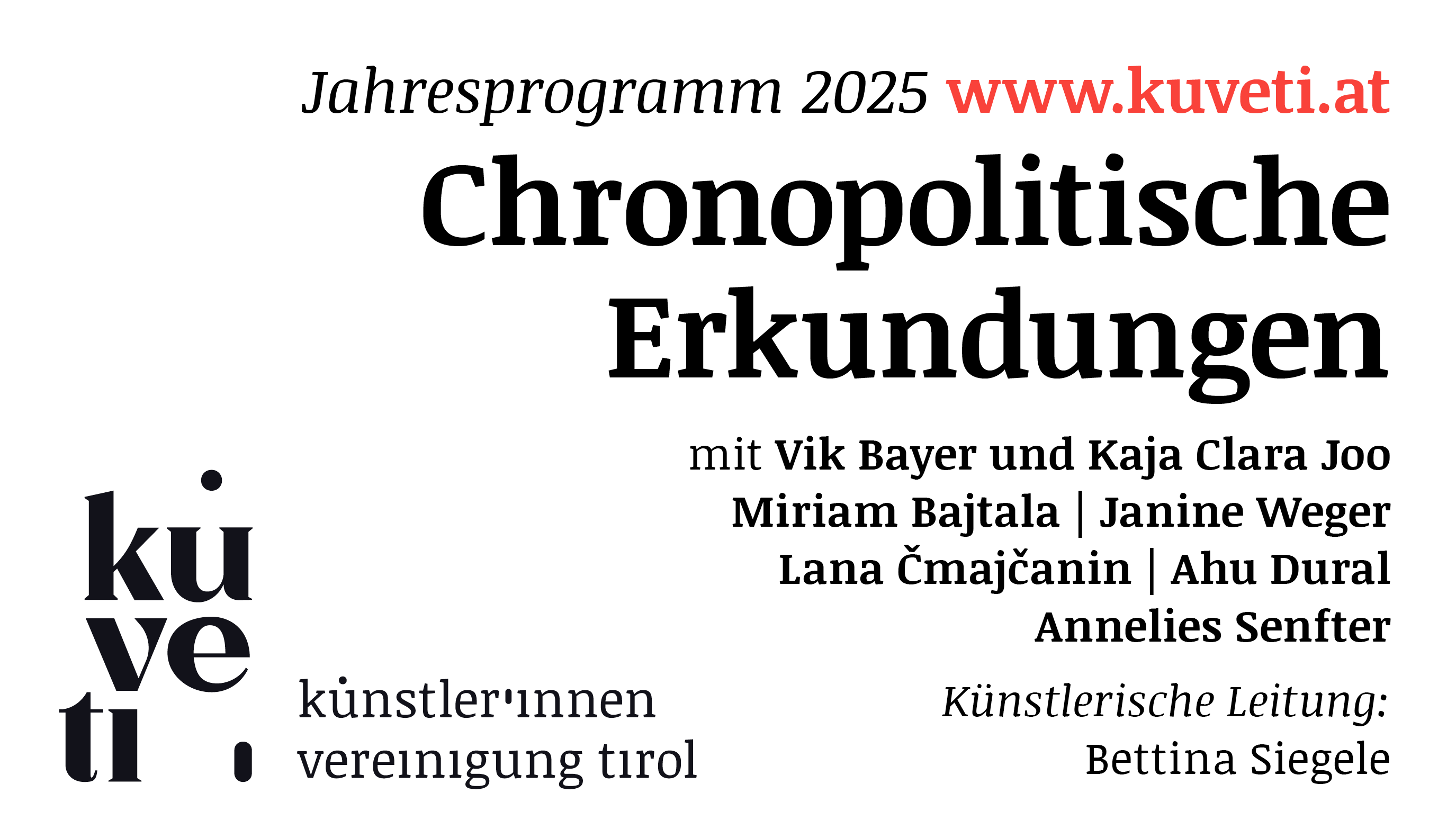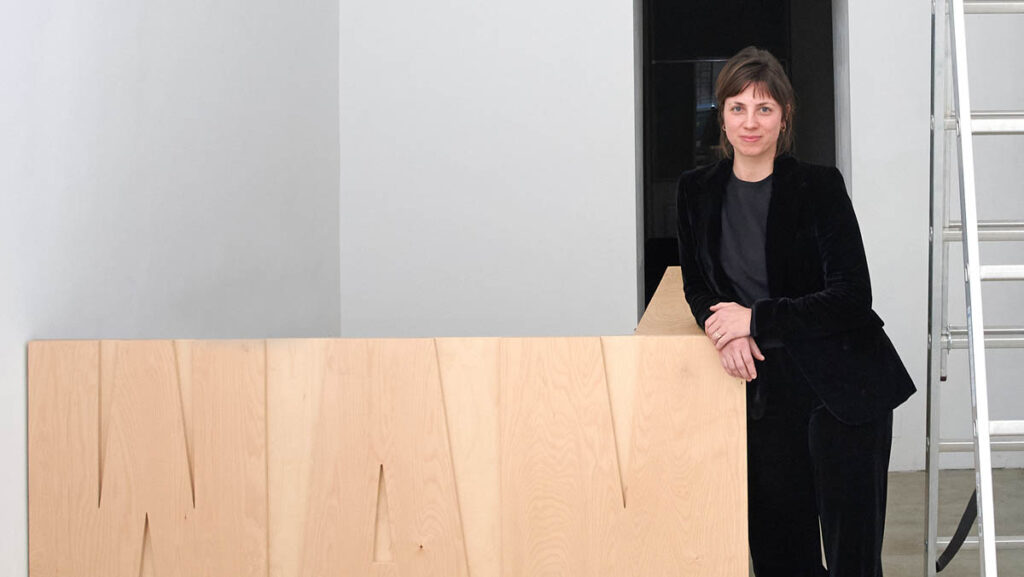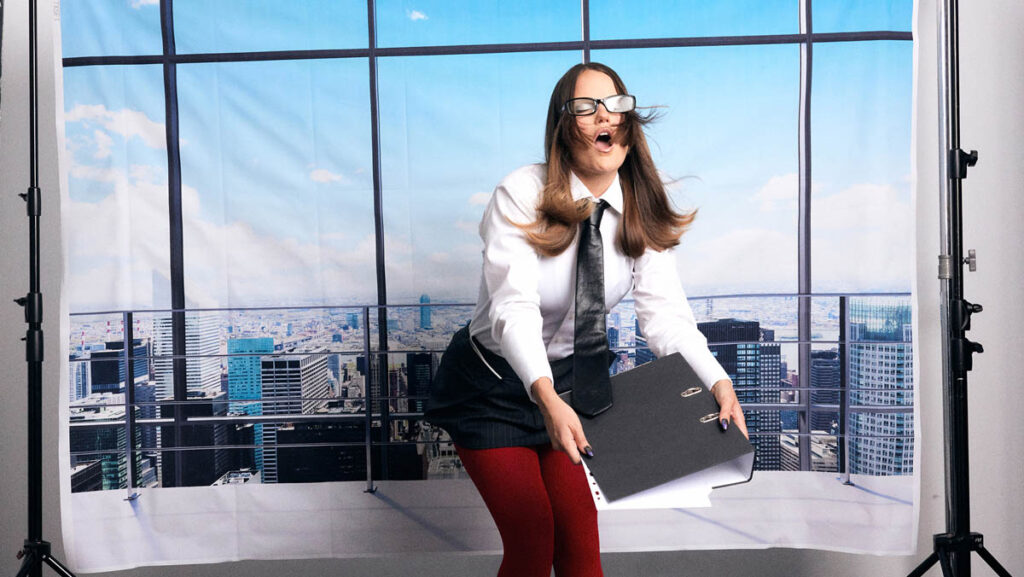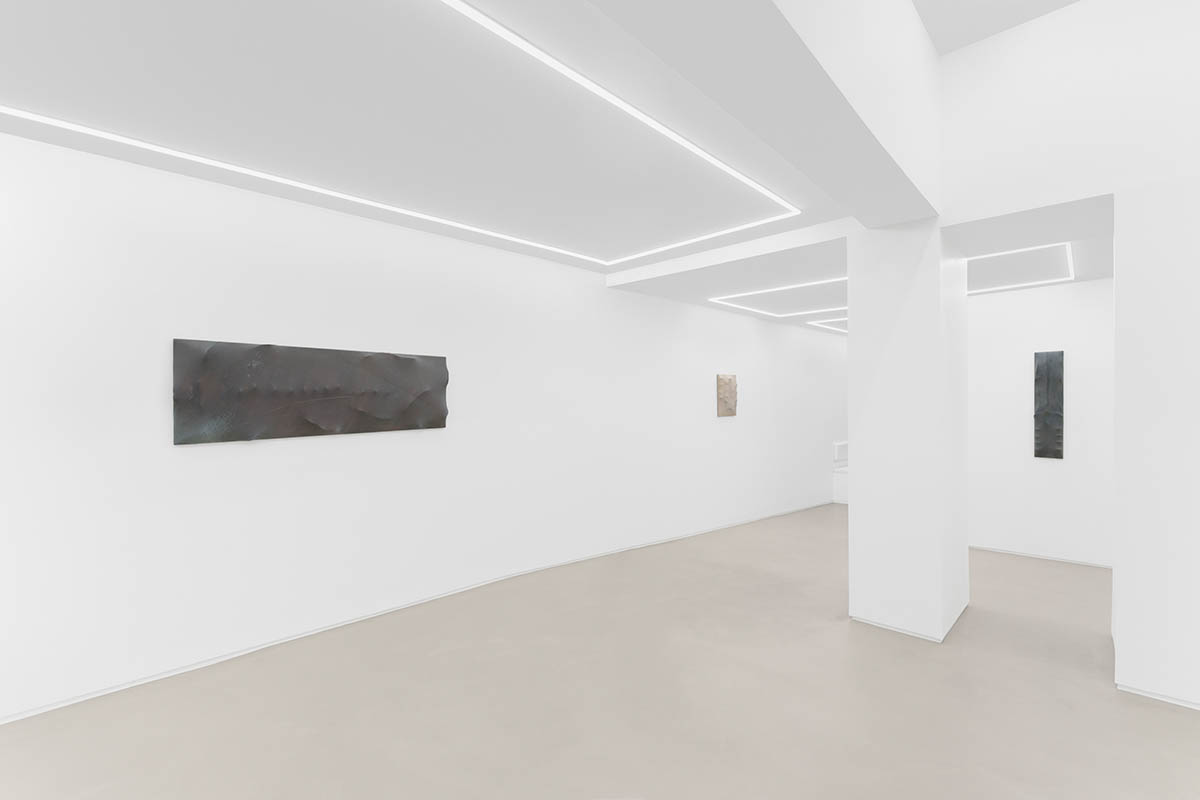
Where are you based now, and where were you born?
I’ve been based in Paris for 10 years now. Where I work as an artist and as a set designer in the fashion industry. I was born in Switzerland but grew up in a Dutch household. After a decade in Paris, I’ve started to feel a bit Parisian, but my mentality is still more Dutch-Swiss—a good mix of different cultures.
You’ve mentioned the set designer job; can you tell me a bit more?
I originally studied photography and moved to Paris in 2014 to work as a photographer. However, I never felt entirely comfortable with the idea of being just a photographer. I was always more drawn to building the sets and creating everything that would appear in the image. For a long time, my work revolved around producing a final image as the artwork. It took me several years to detach from that mindset.
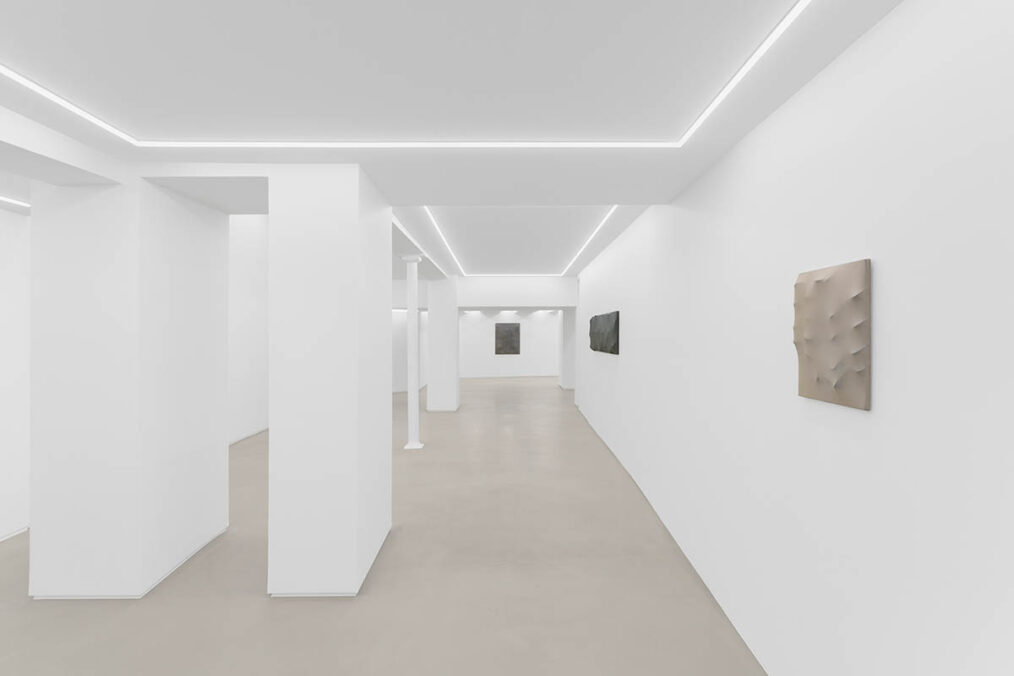

Eventually, I started exploring other mediums—sculpture, installation, and performance—especially after completing a one-year artist residency at the Swiss Institute in Rome in 2017. During this time, I deconstructed my relationship with image-making and photography entirely. It felt like a rebirth for me, both creatively and personally. It was a challenging period, as I was grappling with questions of identity and trying to reinvent myself beyond the label of „photographer.“
This shift led me to focus on sculpture and explore themes surrounding the body and skin. I began experimenting with shapes and forms, and with my latest series, I feel like I’ve reached the core of where I want to take my work in the coming years. Presenting this series in a solo show in Paris has been a pivotal moment—it’s the first time I’ve showcased this body of work all together, and it marks a significant turning point in my creative journey.

Congratulations on your solo show at Lo Brutto Stahl! How would you describe the idea behind Home Auto-psy? What’s the definition and meaning behind the title?
The concept for Home Auto-psy stems from a personal sense of disconnection from my own body, which is something I’ve experienced on different levels in the past years. The show explores themes of disconnection, not just in myself but also in others who sometimes lose touch with their own sense of self as a coping mechanism or psychological response to difficult situations.
I was inspired by the idea of the home as a metaphor for the body, an entity where you should feel safe and entirely yourself. It’s a space where you can either retreat and hide or expand and grow. The title Home Auto-psy is intentionally split: „auto“ refers to self-analysis—reflecting on your psyche, deconstructing and reconstructing your inner world—and „psy“ ties to the idea of understanding psychological or emotional disconnection and finding ways to rebuild.
For me, this concept is deeply personal, as I often feel disconnected from my own body, my inner home. This process of losing and rebuilding that sense of connection is central to the show. When you look at the pieces, you’ll notice elements like membranes or layers beneath the skin, as if they’re ready to emerge. They’re caught between hiding and growing, seeking a home within while simultaneously reaching outward to expand beyond their confines.
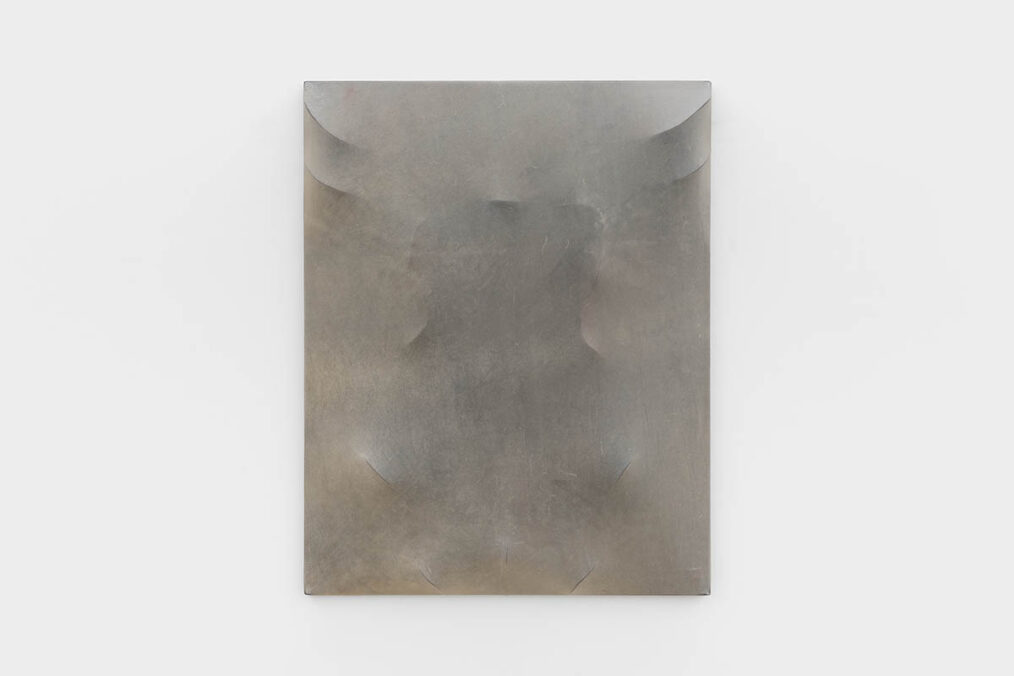
When I saw your sculptures, I had a strong, almost physical reaction—like my ribs were cracking. The feeling was both enticing and deeply disconcerting. What emotions were you trying to evoke with these works?
Many of my works center around motifs of the body, but they’re more about emotional projections onto bodily spaces. I wanted to explore zones within the body that are deeply tied to our emotions. For instance, there’s a piece called Neck Breeze. The title itself is crucial because it evokes a specific physical and emotional memory—like the warm sensation of breath on the back of the neck. It can feel calming, like the way we cradle a baby’s head, but at the same time, it can be unsettling, like the sensation of someone breathing down your neck—a predator or unwelcome presence. This duality of hypersensitivity and discomfort is something I wanted to capture in the titles and the forms of each work.
Other works explore areas like the hip bones or the stomach. For example, I have two smaller pieces, one pink and one red, both referred to as „caves“ in their titles. The pink one, Love’s cave, warm waves evokes warmth, safety, and a loving relationship, whether with yourself or someone else. The red piece, Caution’s cave, warning waves positioned at the back of the show, represents a tense, gut-level awareness of danger—whether physical or psychological.
There’s also a larger, more abstract piece with an animalistic quality. This work explores inner strength and the primal aggression that can reside within us. Many of the other sculptures resemble distorted ribs, spines, or backs—forms that suggest tension unease, and release at the same time.

The materials themselves play a crucial role in evoking these sensations. For example, the sculptures are made of leather injected with glycerin, which keeps them constantly wet and cold. This creates an uncanny dynamic—you have to care for the pieces, applying glycerin regularly, as if feeding them. If they absorb too much, they start to “ cry”—dripping. There’s a delicate balance to maintain, and this gives the works a liminal quality, existing between life and death.
The monochromatic palette enhances the tactile and intimate relationship with the pieces. The subtle variations in color and shade come from the leather’s texture and thickness and how the light interacts with it. I’m particularly drawn to this interplay between material and light, as it brings out the skin-like quality of the sculptures. For me, the relationship between the viewer and the work becomes almost intimate—it’s as though the sculptures invite you to care for them while confronting your own visceral reactions.
Have you ever dealt with body dysmorphia yourself, or does this theme come from stories of others around you?
As a woman born in the early ’90s, I’ve experienced a lot of social pressure around body image. Back then, fashion magazines and movies of the 2000s were filled with body-shaming narratives, and growing up in that culture deeply influenced how I perceived myself. I am interested in how we perceive and experience ourselves on a physical and emotional level. The relationship with our body can be violent, shaped by internalized expectations and external pressures. It’s this duality—being harsh on ourselves but also trying to care for ourselves—that fascinates me.
The idea of touch plays a significant role, too. For me, touch is linked to memory—whether it’s violent or nurturing. The works reflect this dynamic.

Would you ever think about doing literal excavations—digging into physical spaces or bodies—to create projects that explore human development or decay?
I’m fascinated by artifacts and ancient objects; however, my work isn’t focused on things that have died or existed only in the past. Instead, I’m more interested in the living body, in the flux of emotions and sensations we experience while alive. Rather than excavating physical remains or static histories, I’m drawn to the idea of internal exploration—digging into the emotional and psychological layers within ourselves and our connections to others. My work seeks to evoke these living processes, capturing the tension and dynamism of being in a body and interacting with others rather than exploring what’s no longer alive.
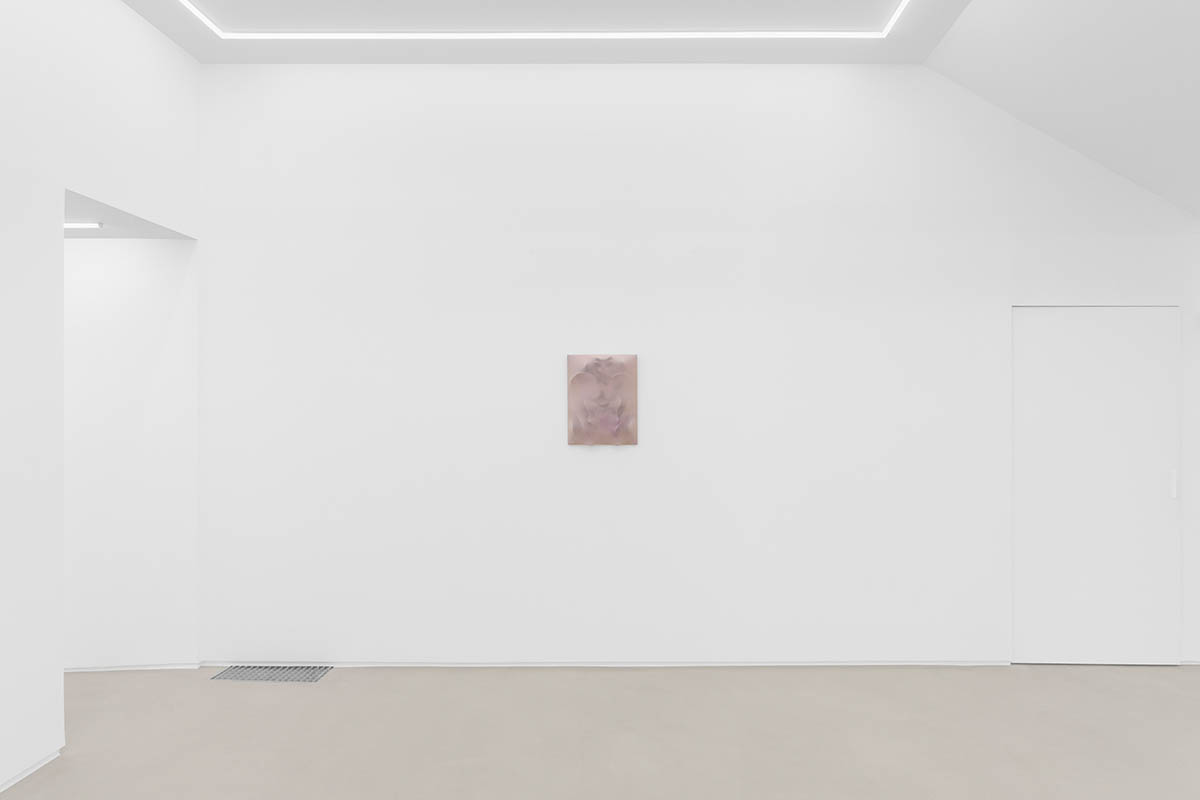
You’ve referred to Georges Bataille’s L’érotisme. In it, he talks about the connection between eros and death, suggesting that desire isn’t just about pleasure but crosses into deeper, darker territory. Do you agree? How has the book shaped your thinking and art approach?
I’m deeply interested in the moments of tension that exist within my work, particularly the limits of the human experience—having a body, feeling disconnected from it, and longing for connection and continuity. Bataille’s exploration of the transgression between continuity and discontinuity resonates with me. As humans, we all long for a sense of continuity, yet paradoxically, the only way to truly achieve it is through death, by losing our physical form. This creates a fascinating contradiction: no one wants to die, yet we yearn for a kind of peace or permanence that seems only attainable in death.
Through erotics and sexuality, there’s perhaps a way to glimpse this sense of connection. Bataille examines how the intersection of death and desire is territorialized—how humans link these profound, often taboo experiences. What I find particularly compelling in his writing is how he addresses cruelty, violence, and the taboos surrounding them. He doesn’t suggest literal violence as a path to peace but instead reflects on how these impulses exist alongside care and intimacy.
How do you communicate with your body?
I communicate with my body through art. The pieces in my show are fragments or projections of it. Together, they form one large body, with each work reflecting moments of tension or connection. Spending time in the studio is the closest I can get to truly understanding and engaging with myself. The process of creating my works is deeply personal and almost therapeutic. It begins with constructing the „bones“ from wire, then layering in „organs“ using textiles and paint, and finally adding the „skin“ with leather. Every piece is made from scratch, and this act of building a body mirrors a healing process for me.
It’s an indescribable, almost untouchable feeling—one that’s difficult to articulate but resonates through the artwork. The pieces embody a kind of physical interpretation or manifestation of emotion—something visceral and tangible that reflects the dissonance and intimacy we all experience with our bodies.

Do you maintain a balance between the physical and the spiritual? Do you believe in the connection or dialogue between the natural and the divine?
For me, the balance between the physical and the spiritual lies in creativity. While I don’t consider myself a particularly spiritual person, I believe spirituality can be found in everything— in nature, in our connections with others, and in how we experience the world. For instance, I think of the divine as those moments of deep connection with another person, where you feel completely in sync. It’s the same with connecting to places, animals, plants, or any other being. Those experiences, to me, are the most spiritual—an extension of the natural world’s power to bring us together.
This is also why I’ve always been drawn to art. It offers a context that resonates with people, yet it allows space for deeply personal interpretations. Creating through materials and research feels like the most natural way for me to foster those connections and explore the dialogue between the physical and the spiritual.
Manon Wertenbroek – www.manonwertenbroek.com



